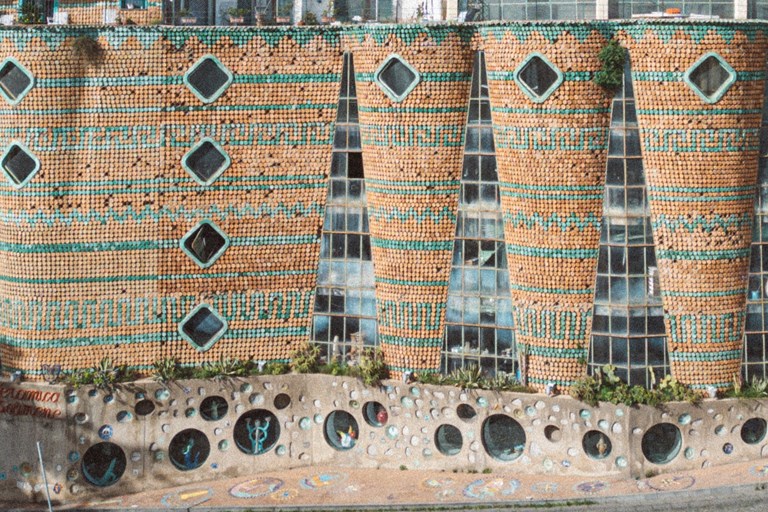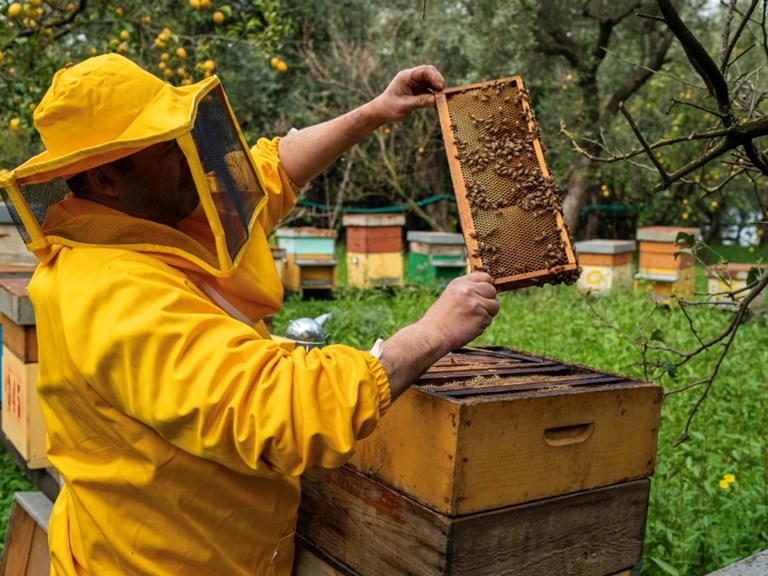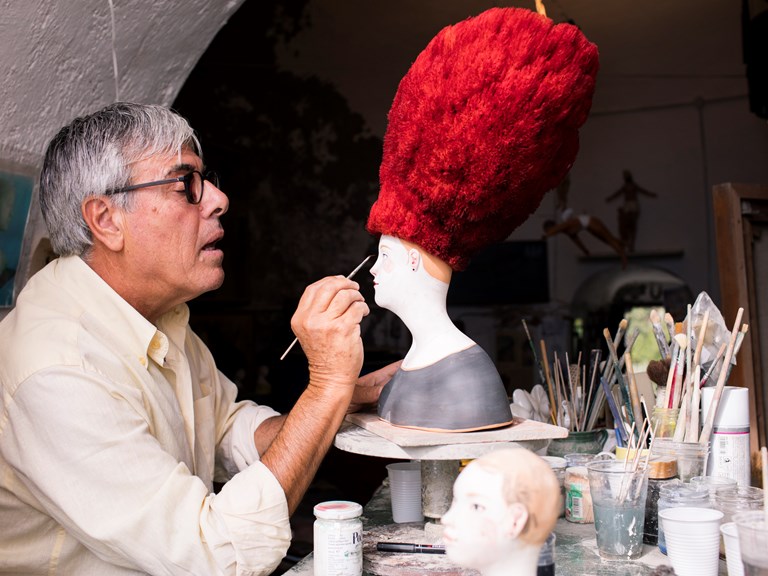THE GREATEST ITALIAN 20TH CENTURY BUILDING YOU'VE NEVER HEARD OF
07.04.2024 BEST OF THE COAST
With their vibrant colours and jaunty decorative borders featuring birds, octopuses, pigs, starfish, cows and other denizens of earth, sky and sea, the ‘Linea Classica’ plates, bowls, cups, mugs and other items that the firm founded by Vincenzo Solimene first began to make in the 1950s have found their way into homes the world over. They are a familiar sight at Le Sirenuse too, where they have been part of the lunch service for over a decade.
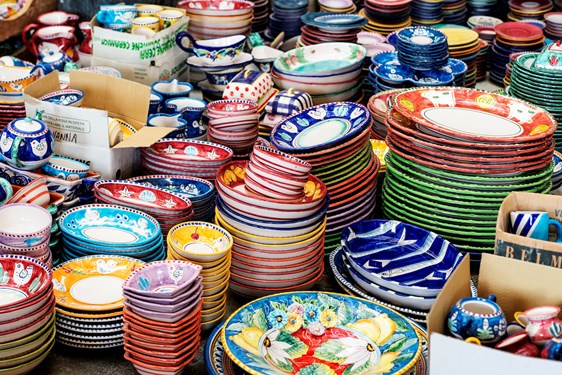
View
The Solimene factory is predominantly a wholesale operation – so relatively few visitors to the Amalfi Coast ever get to see it. But it is well worth seeking out. Coming on as something that Antonio Gaudì might have conceived if he’d lived half a century later, this is, without a doubt, the most original example of twentieth-century architecture anywhere on the Sorrentine peninsula.
The story of Paolo Soleri (pictured at work in the drafting room of Cosanti in the mid 1960s), the architect and visionary who designed it, is one that leads from Turin to Arizona. It has been told in numerous books and articles: here we limit ourselves to casting some light on the Vietri interlude in the life of a man who was so far ahead of his time that he still feels as if he’s talking to us from the future.
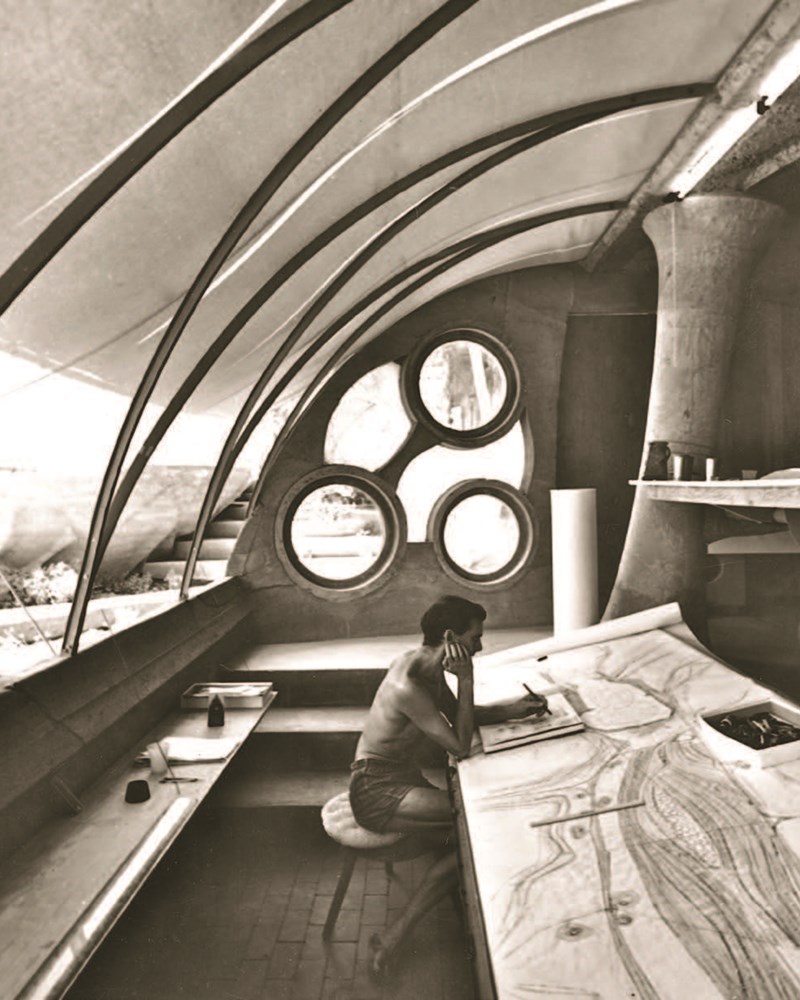
Born in Turin in 1919, Paolo Soleri fell under the spell of Frank Lloyd Wright while studying architecture at the Politecnico di Torino. As soon as he graduated, in 1946, he set off for the United States to apprentice with the American 20th-century architectural master, who was then in his late seventies. Imbibing his mentor’s spiritual approach to man-made structures and the built landscape, but disagreeing with his benign view of the horizontally-spreading suburb as the American urban ideal, Soleri developed a personal approach that he termed ‘arcology’ – a fusion of architecture and ecology.
In a nutshell, Soleri’s vision for the future of urban conglomerations was that a ‘vertical’ city built of easily replicable modular elements would have the smallest environmental impact while promoting the greatest social cohesion among its denizens. He would eventually put these ideas into practice in an experimental town called Arcosanti (part of which is pictured below) that, with the help of thousands of volunteers, took shape in the desert of central Arizona between 1970 and 1989. Today, it is the headquarters of the Cosanti Foundation, a non-profit dedicated to advancing Soleri’s work and the ideas behind it.
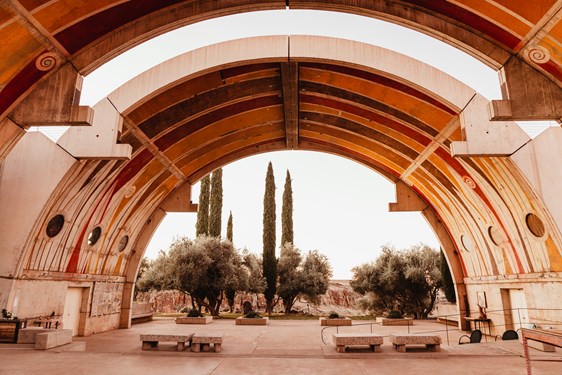
View
But it was while still a young architect, fresh from his Taliesin Fellowship with Lloyd Wright, that Soleri ended up on the Amalfi Coast. He had returned to Italy in 1950 with his new American wife, Colly, and baby daughter Kristine, to take a road trip with something of a Californian hippy feel to it (here too, Soleri was well ahead of the curve). He bought a small truck in Turin, converted it into camper van complete with rooftop solar-heated water tank, and drove down south with Colly and Kristine. Believing that an architect who wasn’t also a craftsman could hardly be called an architect, Soleri was keen to learn the art of pottery. And in Vietri, he found a young artisanal entrepreneur of his own age called Vincenzo Solimene who took a shine to the young idealist and agreed to teach him.
Solimene already had a plan for the factory that would allow him to expand his business. It was a standard hangar-style edifice that, like most post-war industrial sheds, took next to no account in its design of the activity that was to be housed inside it.
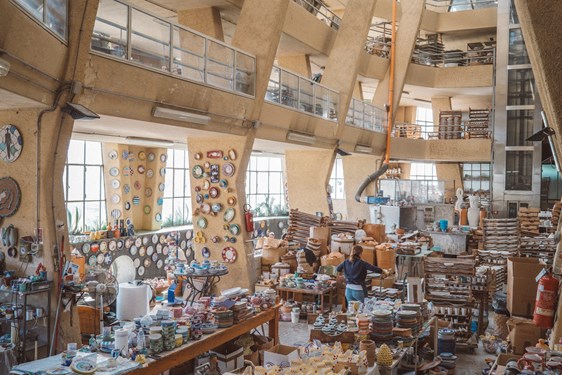
View
Soleri convinced his new friend to let him have a go at designing something a little different – a building that would not only cleave to the purpose and workflow of a busy ceramics enterprise, but embody its artistic remit in its every detail. It would be an ideal fusion of Soleri’s architectural vision and Solimene’s artisanal traditions. So it was entirely appropriate that Soleri presented the project to his client in the form of a clay model.
Echoing Frank Lloyd Wright’s near contemporaneous plan for the Guggenheim Museum in New York, the factory was conceived so that each of the four stages of its production process, from raw clay through shaping, firing and stocking, could take place in a smooth, continuous progression down the wide spiral ramp that runs along the inside of the building, whose elongated floorplan was determined by an awkward site that was partly excavated from the steep slope behind.
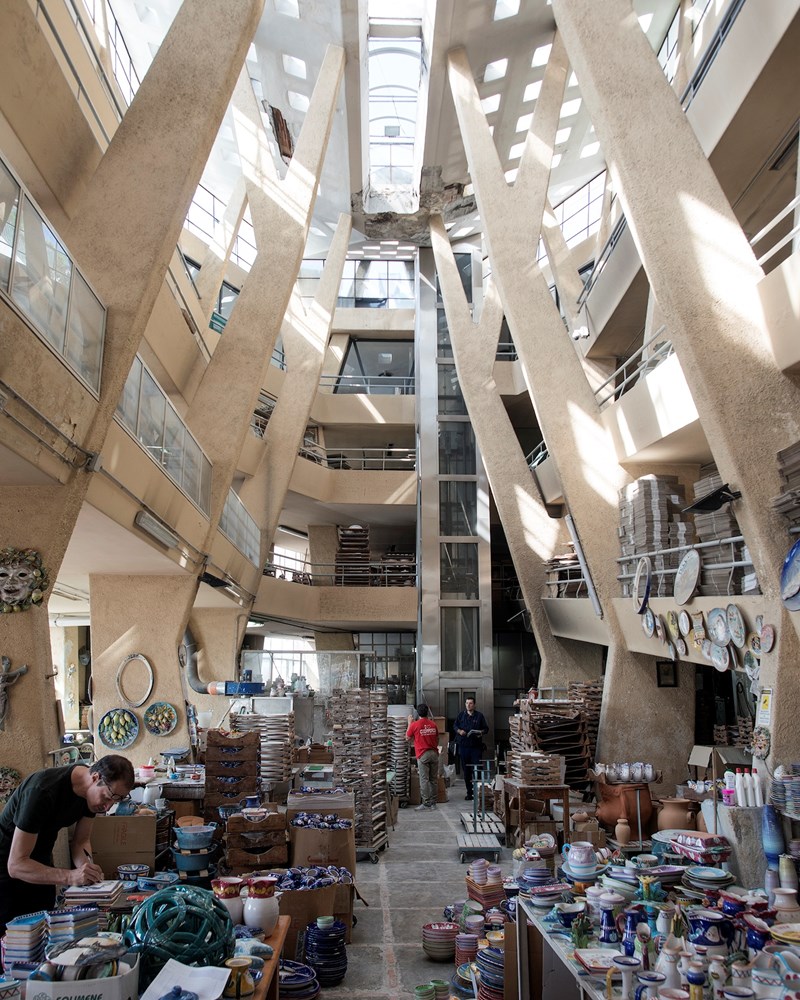
The concrete columns that support the spiral ramp branch like great trees around a cathedral-like central atrium, which is illuminated by natural light both from the side windows and the great funnel-shaped skylight above.
Arboreal parallels continue outside, where the series of apse-like projections that cadence the façade echo the graceful dance of the umbrella pines on the hill behind. These tapering convex pillars are clothed in mummarelle – terracotta jars designed to be set into the wall. While they are invisible inside the building, their circular bases protrude on the outside.
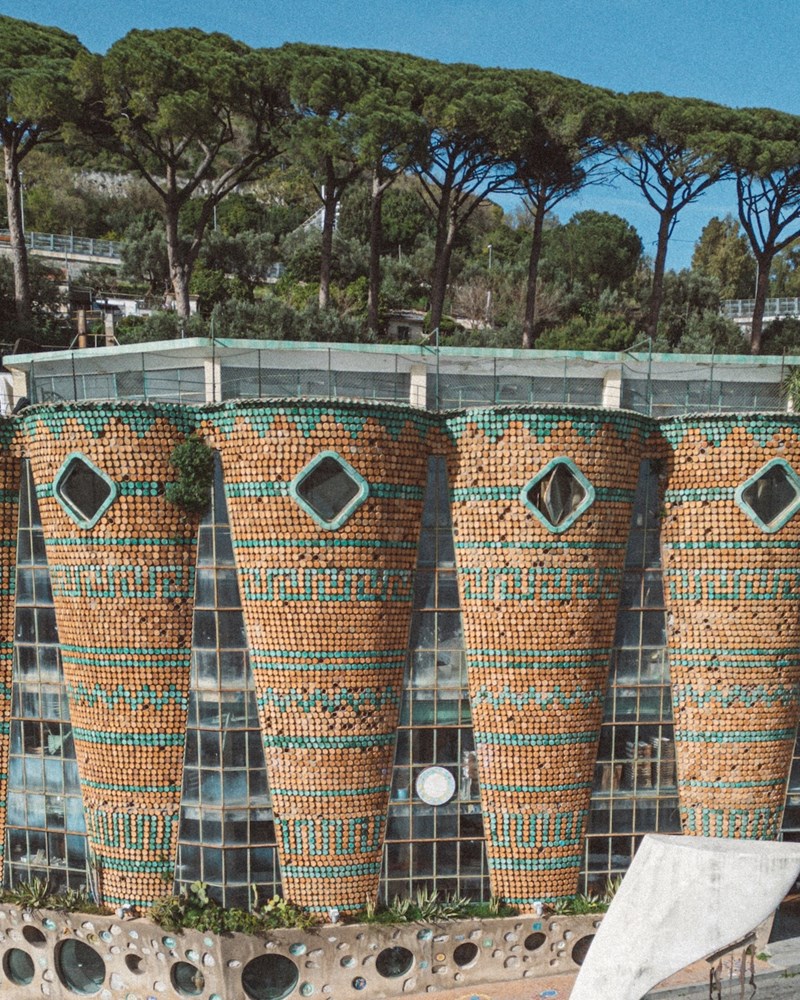
Some are glazed in green enamel, like the tiles that cover the domes of many of the Amalfi Coast’s churches, while others are left in their natural terracotta state. The effect is aesthetically striking – we are reminded of a glittering snake skin or a primitive jewelled crown – but the mummarelle also act serve a practical purpose as thermal insulators, like the cordon of drought-resistant plants that run around the building’s first-floor exterior balcony.
However, the idea of using mummarelle as an exterior shell was in fact suggested by the client, not the architect. Solimene reasoned that as he had a whole team of skilled ceramicists waiting to resume full production, he might as well put them to good use helping to build the factory they were going to work in.
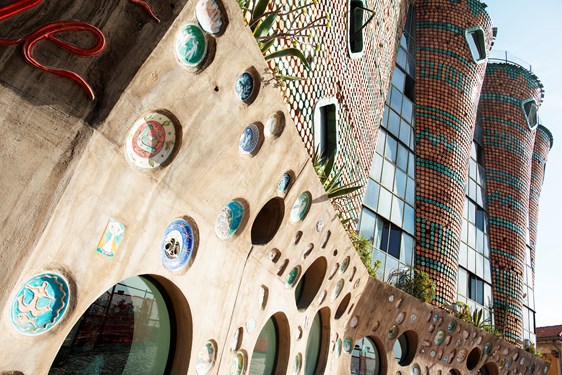
View
Soleri left Vietri in 1954 when construction was only half finished. He was keen to get back to Colly and Kristine in Arizona, and was frustrated by the many bureaucratic delays to the project – delays that were understandable in one way, as local and national planning and heritage departments were being asked to approve drawings that must have looked like sketches for the sets of a sci-fi film. Keen to recoup his investment, Solimene engaged a local construction manager to finish overseeing the building works. Corners were cut, and some parts of Soleri’s original plan were either never completed or altered beyond recognition. But the Solimene factory still bears the unmistakable imprint of the Italian-American visionary. Architectural scholar Bruno Zevi called it “one of the best examples of organic architecture ever produced in Italy”.
The only project by Soleri that was ever built in Europe, the Ceramica Artistica Solimene factory was inaugurated on 9 January 1956. In 2004, it was listed by the Italian government as a building of significant national cultural and landscape heritage value. Under the tutelage of Vincenzo Solimene’s four children, Giovanna, Cinzia, Ersilia and Giancarlo, the factory continues to produce some of Vietri’s best-loved and most instantly recognizable ceramics.
Photos © Roberto Salomone except:
Paolo Soleri in the drafting room at Cosanti during the mid 1960's, working on one of his scroll drawings: Original photograph by Stuart A. Weiner reproduced with permission from the Weiner Family, courtesy The Cosanti Foundation.
Arcosanti today, © Jessica Jameson, courtesy The Cosanti Foundation.
Le Sirenuse Newsletter
Stay up to date
Sign up to our newsletter for regular updates on Amalfi Coast stories, events, recipes and glorious sunsets
